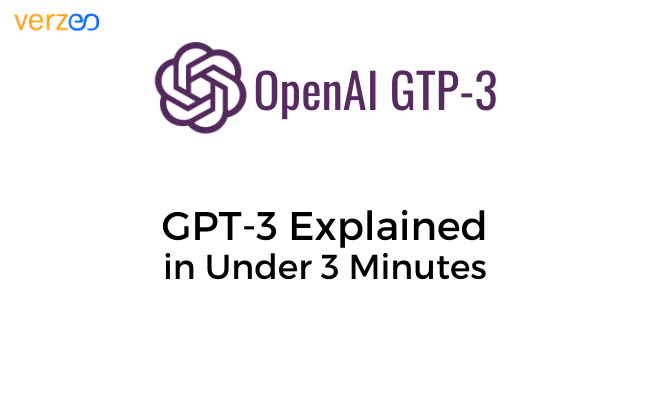GTP-3 is a Mega-Machine Learning model that has been created by OpenAI. It can write its poems, articles, op-eds, blogs, etc. or even a working code. Yes, you read that right. It can write a working code all on its own.
To be able to use this revolutionary GPT-3 model you will need to be whitelisted by OpenAI first. There’s an application procedure for the same. But delving a bit deeper into this model it is evident that the applications seem to be endless and it has great potential. Apparently, you can use it to raise a query in an SQL database in plain English, use it to automatically comment code, write and generate code of its own, use it to write SEO friendly and trending headlines for articles, tweet viral content, the list is endless.
Let us dive a bit deeper to get a better understanding of how it is all so intricately designed
To put it in simple terms, GPT-3 is a neural network powered language-assessment model. A language model is something that forecasts the likelihood of a sentence to exist in the world. To better understand this, take a normal sentence like “I take my dog for a walk”, the language model labels this sentence as more probable to exist(on the internet) than the sentence “ I take my fish for a walk”.
This applies to sentences, phrases, and in a wider sense, any probable sequence of understandable characters.
Similar to most of the language models presently used, GPT-3 is trained on an unlabeled text dataset (training data includes Common Crawl and Wikipedia among others). The words or phrases are randomly eliminated from the text, and the model must learn to predict and fill them up using the leftover words as context. Theoretically, it is a quite simple task that results in an extensively generalizable and very powerful model.
GPT-3 model architecture is a transformer-based neural network model. It is relatively a quite new model that rose to popularity around 2-3 years ago and forms the basis for the famous NLP model BERT and also GPT-3 predecessor, GPT-2. From the perspective of the architecture of the model, GPT-3 is not very novel.

Then why is the GPT-3 model so revolutionary and special?
It is MASSIVE, trust me, it is. It consists of over 175 billion parameters! It is easily the largest language model ever created and leaves the runner up quite far behind. This is mostly because it was trained on the largest ever dataset as compared to any other language model and is the main reason why it is so smart and impressive and also human-sounding.
But here comes the magic in this model. Due to its enormous size, GPT-3 can perform efficiently what no other model could ever do. It doesn’t require to be fine-tuned for specific tasks. You can ask GPT-3 to be whatever you want. Be it a programmer who writes codes, a translator, a specific famous author, a poet, etc. And it can do all of that with a provision of just 10 training sets (examples). For example, if you like any particular writing or content, once you train the model with 10 of his novels you’ll have your very own virtual writer who writes with the same style, language, intensity, etc. It sounds crazy but crazy is the new normal with this model, and the world now that I mention it.
This is something to be noted by all Machine Learning and AI enthusiasts out there. GPT-3 is so exciting to learn. Other language models such as BERT, as I mentioned, require a lot of fine-tuning to perform a very specific task. For a simple task such as language translation, it requires tonnes of examples to teach it how translations work in these languages.
It requires a large training set to adapt to a specific task such as translation, detecting spam, summarizing, etc to name a few, which can be quite tedious and sometimes impossible depending on the specifics of the task.
With GPT-3 the case is quite the opposite. You don’t require the fine-tuning step at all. That is the crux of this model. To all machine learning and AI enthusiasts out there who know the basic concepts of their domains, listen to this, you can use GPT-3 for customized language tasks without training data. It doesn’t just sound magical, it is.
Conclusion
Presently, GPT-3 is in the Private Beta testing phase, but a huge chunk of the tech world can’t wait to get their piece of this cake.
One can only wait and brace themselves for the astonishing developments taking place in the Machine Learning and AI world. Time and again, the advancements disrupt the ongoing tech world. It is necessary to keep yourself updated and to be on your toes all the time, especially you who is reading this article and wishes to build a successful career and a highly challenging and entertaining future in these field(s).
New to the concept of machine learning and artificial intelligence? Don’t worry Verzeo can help you with it.
We at Verzeo will provide you with all the necessary skills and techniques to navigate and accelerate your careers with our specially designed courses and internships. Check out our amazing array of courses ranging from Data Science to Digital Marketing containing A-Z of all concepts in the fields on the lines of real-world technicalities.

